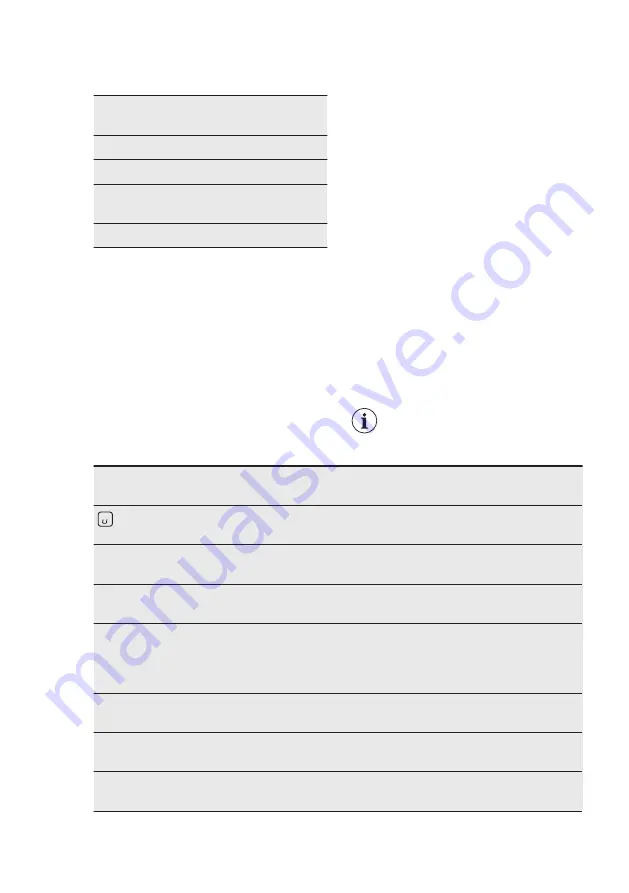
7.2 Minimum cookware
diameter
Cooking
zone
Cookware di‐
ameter (mm)
Power (W)
Left rear
125 - 140
1400/2500
Right rear 145 - 180
1800/2800
Right
front
145 - 180
1800/2800
Left front 180 - 210
2300/3600
7.3 The noises during
operation
If you can hear:
• crack noise: cookware is made of
different materials (a sandwich
construction).
• whistle sound: you use a cooking
zone with a high power level and the
cookware is made of different
materials (a sandwich construction).
• humming: you use a high power level.
• clicking: electric switching occurs.
• hissing, buzzing: the fan operates.
The noises are normal and do not
indicate any malfunction.
7.4 Öko Timer (Eco Timer)
To save energy, the heater of the
cooking zone deactivates before the
count down timer sounds. The difference
in the operation time depends on the
heat setting level and the length of the
cooking operation.
7.5 Examples of cooking
applications
The correlation between the heat setting
of a zone and its consumption of power
is not linear. When you increase the heat
setting, it is not proportional to the
increase of the consumption of power. It
means that a cooking zone with the
medium heat setting uses less than a
half of its power.
The data in the table is for
guidance only.
Heat setting
Use to:
Time
(min)
Hints
- 1
Keep cooked food warm.
as nec‐
essary
Put a lid on the cookware.
1 - 2.
Hollandaise sauce, melt: but‐
ter, chocolate, gelatine.
5 - 25
Mix from time to time.
1 - 2.
Solidify: fluffy omelettes, baked
eggs.
10 - 40
Cook with a lid on.
2. - 3.
Simmer rice and milkbased
dishes, heat up ready-cooked
meals.
25 - 50
Add at least twice as much liq‐
uid as rice, mix milk dishes
halfway through the proce‐
dure.
3. - 4.
Steam vegetables, fish, meat.
20 - 45
Add a couple of tablespoons
of liquid.
4. - 5.
Steam potatoes.
20 - 60
Use max. ¼ l of water for 750
g of potatoes.
4. - 5.
Cook larger quantities of food,
stews and soups.
60 - 150 Up to 3 l of liquid plus ingredi‐
ents.
www.aeg.com
18
















































